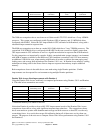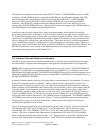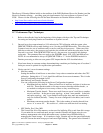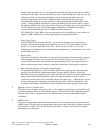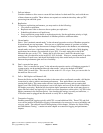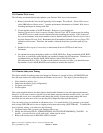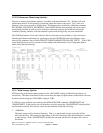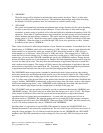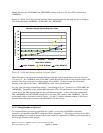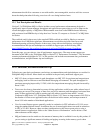2. *MINIMIZE
The main storage will be allocated to minimize the space used by the object. That is, as little main
storage as possible will be allocated and used. This minimizes main storage usage while increasing
the number of disk I/O operations since less information is cached in main storage.
3. *DYNAMIC
The system will dynamically determine the optimum main storage allocation for the object depending
on other system activity and main storage contention. That is, when there is little main storage
contention, as much storage as possible will be allocated and used to minimize the number of disk I/O
operations. When there is significant main storage contention, less main storage will be allocated and
used to minimize the main storage contention. This option only has an effect when the storage pool's
paging option is *CALC. When the storage pool's paging option is *FIXED, the behavior is the same
as *NORMAL. When the object is accessed through a file server, this option has no effect. Instead,
its behavior is the same as *NORMAL.
These values can be used to affect the performance of your Domino environment. As described above, the
default setting is *NORMAL which will work similarly to V5R1. However, there is a new default for the
block transfer size of stream files which are created in V5R2. Stream files created in V5R2 will use a
block transfer size of 16k bytes, versus 32k bytes in V5R1 and earlier. Files created prior to V5R2 will
retain the 32k byte block transfer size. To change stream files created prior to V5R2 to use the 16k block
transfer size, you can use the CHGATR command and specify the *NORMAL attribute. Testing showed
that the 16k block transfer size is advantageous for Domino mail and calendaring function which typically
accesses less than 16k at a time. This may affect the performance of applications that access stream files
with a random access patterns. This change will likely improve the performance of applications that read
and write data in logical I/O sizes smaller than 16k. Conversely, it may slightly degrade the performance
of applications that read and write data with a specified data length greater than 16k.
The *MINIMIZE main storage option is intended to minimize the main storage required when reading
and writing stream files and changes the block transfer size of the stream file object to 8k. When reading
or writing sequentially, main storage pages for the stream file are recycled to minimize the working set
size. To offset some of the adverse effects of the smaller block transfer size and the reduce likelihood that
a page is resident, *MINIMIZE synchronously reads several pages from disk when a read or write request
would cause multiple page faults. Also, *MINIMIZE avoids reading data from disk when the block of
data to be written is page aligned and has a length that is a multiple of the page size.
The *DYNAMIC main storage option is intended to provide a compromise between the *NORMAL and
*MINIMIZE settings. This option only has an effect when the storage pool is set to *CALC. The Expert
Cache feature of the iSeries allows the file system read and write functions to adjust their internal
algorithms based on system tuning recommendations. A system with low paging rates will use an
algorithm similar to *NORMAL, but when the paging rates are too high due to main storage contention,
the algorithm used will be more like *MINIMIZE. When specifying *DYNAMIC, the block transfer size
is set to 12k, midway between the value of *NORMAL and *MINIMIZE.
Deciding when it is appropriate to use the CHGATR command to change the *MAINSTGOPT for a
Domino environment is not necessarily straightforward. The rest of this section will discuss test results of
using the various attributes. For all of the test results shown here for the *MINIMIZE and *DYNAMIC
attributes, the CHGATR command was used to change all of the user mail .NSF files being used in the
test.
IBM i 6.1 Performance Capabilities Reference - January/April/October 2008
© Copyright IBM Corp. 2008 Chapter 11 - Domino 169



